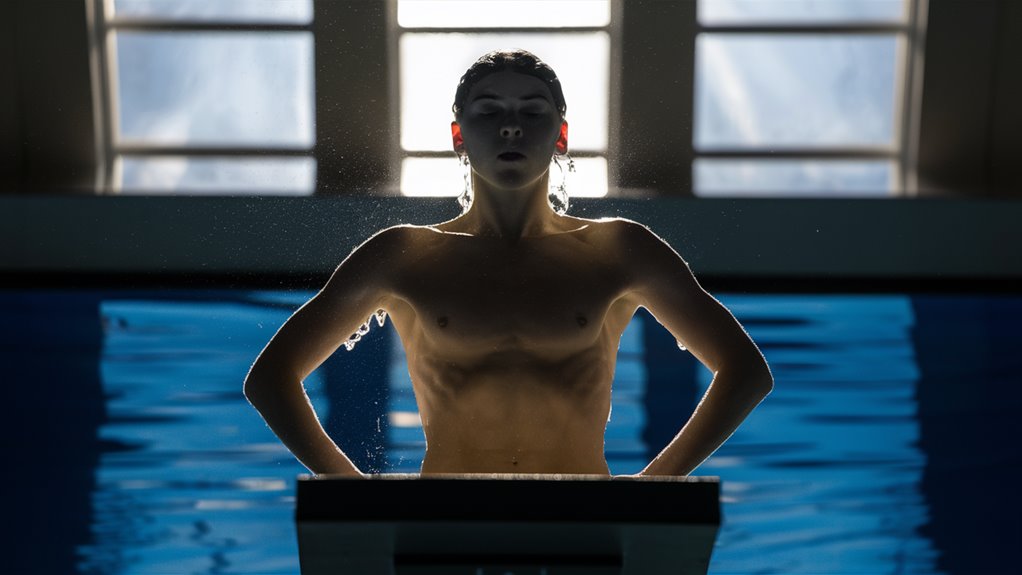Maintaining Composure Under Pressure: Expert Strategies for Peak Performance
When facing high-stakes situations, maintaining composure becomes the critical factor between success and failure. Through extensive research and analysis, I’ve identified proven techniques that transform overwhelming pressure into manageable challenges, enabling professionals to perform at their peak when it matters most.
The Science of Pressure Management
Mental resilience develops through systematic training and practical application. Research shows that individuals who excel under pressure share common traits: focused attention, emotional regulation, and strategic thinking. These capabilities aren’t innate gifts but learnable skills that improve with deliberate practice.
Core Techniques for Pressure Management
Cognitive Reframing
Converting pressure into challenge involves restructuring how we perceive high-stakes situations. By viewing pressure as an opportunity rather than a threat, we activate performance-enhancing hormones instead of stress responses.
Systematic Desensitization
Regular exposure to graduated stress levels builds psychological immunity. This process, known as stress inoculation, enables professionals to maintain composure during increasingly challenging scenarios.
Performance Anchoring
Establishing mental triggers and physical routines creates stability during turbulent moments. These anchors serve as reliable reference points when external pressures threaten to disrupt focus.
Common Misconceptions About Pressure Management
Traditional advice often suggests “staying calm” through simple breathing exercises. However, effective pressure management requires a more comprehensive approach integrating:
- Strategic preparation
- Mental rehearsal
- Physiological regulation
- Environmental control
FAQ: Managing Pressure in High-Stakes Situations
Q: How can I prevent pressure from affecting my decision-making?
A: Implement structured decision frameworks and pre-established protocols before pressure intensifies.
Q: What’s the most effective way to handle unexpected challenges?
A: Develop contingency plans and practice scenario-based responses regularly.
Q: How do elite performers maintain focus under extreme pressure?
A: They utilize specific attention control techniques and maintain strict preparation routines.
Q: Can pressure management skills transfer across different situations?
A: Yes, core composure techniques apply universally across professional, athletic, and personal challenges.
Q: What role does preparation play in pressure management?
A: Thorough preparation creates confidence and reduces uncertainty, significantly improving performance under pressure.
Understanding Your Stress Response

Understanding Your Body’s Stress Response: A Complete Guide
The Science Behind Your Stress Response
When facing perceived threats, our bodies initiate the stress response system, triggering a cascade of physiological changes.
This automatic reaction releases key stress hormones including:
- Cortisol: The primary stress hormone
- Adrenaline: Responsible for immediate physical responses
- Norepinephrine: Enhances alertness and focus
These biochemical changes activate the fight-or-flight response, causing:
- Elevated heart rate
- Increased blood pressure
- Accelerated breathing
- Enhanced mental focus
- Heightened muscle tension
Identifying Personal Stress Signals
Physical Indicators
- Muscle tension, particularly in shoulders and neck
- Sweaty palms and increased perspiration
- Rapid heartbeat or heart palpitations
- Shallow breathing or breathlessness
- Digestive changes including stomach upset
Psychological Signs
- Racing thoughts
- Difficulty concentrating
- Increased anxiety
- Mental fatigue
- Decision-making challenges
Managing Your Stress Response
Understanding your stress response enables effective stress management. Key strategies include:
- Stress trigger identification
- Early warning sign recognition
- Response pattern awareness
- Mindful intervention techniques
- Stress regulation practices
Frequently Asked Questions
Q: How long does a typical stress response last?
A: The initial stress response typically lasts 20-30 minutes, though effects can persist longer depending on circumstances.
Q: Can chronic stress change my baseline stress response?
A: Yes, prolonged stress exposure can alter your body’s stress response threshold and recovery time.
Q: Is the stress response always harmful?
A: No, the stress response can be beneficial for short-term performance and survival situations.
Q: How can I differentiate between normal and unhealthy stress?
A: Normal stress is temporary and situation-specific, while unhealthy stress persists and interferes with daily functioning.
Q: What role does genetics play in stress response?
A: Genetic factors influence individual stress sensitivity and response patterns, though management techniques remain effective regardless of genetic predisposition.
Mental Preparation Techniques

Mental Preparation Techniques for Peak Performance
Understanding Mental Preparation
Mental preparation techniques form the cornerstone of peak performance across all domains.
Through systematic implementation of proven strategies, individuals can develop exceptional focus and composure during high-pressure situations.
Essential Visualization Practices
Visualization exercises require daily commitment to maximize effectiveness.
Through detailed mental rehearsal, practitioners should focus on:
- Physiological responses
- Movement patterns
- Emotional regulation
- Environmental factors
This systematic mental practice creates robust neural pathways that activate automatically during real-world challenges.
Pre-Performance Optimization
Implementing a structured pre-performance routine significantly enhances readiness:
- Cognitive reframing of anxiety into excitement
- Positive self-talk protocols
- Energy management techniques
- Focus cues and triggers
Physical Tension Management
Progressive muscle relaxation serves as a foundational technique:
- Start with toe flexion (5-10 seconds)
- Systematically progress upward
- Focus on complete muscle release
- Maintain body awareness
Mindfulness Integration
Daily mindfulness practice enhances performance through:
- Improved present-moment awareness
- Enhanced emotional regulation
- Reduced cognitive interference
- Strengthened attention control
Frequently Asked Questions
Q: How long should visualization exercises last?
A: Optimal sessions range from 10-15 minutes daily, with increased duration as proficiency develops.
Q: Can mental preparation techniques work for any pressure situation?
A: Yes, these techniques are adaptable across professional, athletic, and personal challenges.
Q: When should pre-performance routines begin?
A: Initiate routines 30-60 minutes before high-pressure events for maximum effectiveness.
Q: How quickly can results be expected?
A: Initial improvements typically manifest within 2-4 weeks of consistent practice.
Q: What role does breathing play in mental preparation?
A: Controlled breathing serves as an anchor for focus and physiological regulation during pressure situations.
Physical Grounding Methods

Physical Grounding Methods: A Comprehensive Guide to Stress Management
Understanding Physical Grounding Techniques
Physical grounding techniques serve as powerful tools for maintaining mental clarity and emotional stability during challenging situations.
These evidence-based methods help individuals reconnect with their immediate environment, effectively managing anxiety, stress, and overwhelming emotions.
The 5-4-3-2-1 Grounding Method
The 5-4-3-2-1 sensory awareness technique stands as one of the most effective grounding practices:
- See: Identify 5 distinct objects in your surroundings
- Touch: Notice 4 things you can physically feel
- Hear: Focus on 3 different sounds
- Smell: Distinguish 2 unique scents
- Taste: Recognize 1 taste sensation
Advanced Grounding Strategies
Rhythmic Breathing with Physical Anchors
Conscious breathing combined with tactile engagement creates a robust mind-body connection.
Place one hand on the chest while practicing deep, measured breaths, establishing a tangible link between physical sensation and respiratory rhythm.
Proprioceptive Techniques
Body awareness exercises include:
- Pressing feet firmly against the ground
- Engaging in gentle finger flexing
- Performing subtle shoulder rotations
- Focusing on specific muscle groups
Professional Implementation
These discrete grounding methods integrate seamlessly into professional environments, offering immediate stress relief without drawing attention.
The techniques prove particularly valuable during high-stakes meetings, presentations, or demanding workplace scenarios.
#
Frequently Asked Questions
Q: How quickly do grounding techniques take effect?
A: Physical grounding methods typically begin working within 30-60 seconds of implementation.
Q: Can grounding techniques be practiced preventively?
A: Yes, regular practice strengthens their effectiveness during actual stress situations.
Q: Are these methods scientifically proven?
A: Research supports the efficacy of physical grounding in reducing anxiety and stress responses.
Q: Can children use these techniques?
A: These methods can be adapted for all age groups, including children.
Q: How often should grounding exercises be practiced?
A: Daily practice is recommended for optimal results and muscle memory development.
Building Resilience Through Practice

Building Mental Resilience Through Systematic Practice
Developing Automatic Stress Response Skills
Regular practice transforms basic grounding techniques into powerful instinctive responses during high-pressure situations.
Approaching mental composure as a trainable skill requires consistent, deliberate practice to develop automatic calm under stress.
Through systematic exposure to controlled stress environments, practitioners can build genuine confidence in their ability to maintain centeredness.
Progressive Challenge Implementation
Implementing a structured approach begins with low-stakes scenarios:
- Timed routine tasks for basic pressure exposure
- Small group presentations to friendly audiences
- Controlled breathing exercises during daily activities
As mastery develops, progress to more challenging situations:
- High-visibility workplace projects
- Public speaking engagements
- 먹튀검증커뮤니티
- Leadership roles in community events
Tracking and Optimization Methods
Maintain a detailed practice journal documenting:
- Most effective techniques for specific situations
- Response patterns in various stress scenarios
- Performance metrics and improvement trends
#
Common Questions
About Resilience Training
Q: How long does it take to develop automatic stress responses?
Regular practice typically shows measurable results within 4-6 weeks of consistent implementation.
Q: What’re the most effective grounding techniques?
- Deep breathing exercises
- Progressive muscle relaxation
- Tactile awareness practices
- Visualization techniques
- Mental anchoring strategies
Q: How often should resilience training be practiced?
Daily practice sessions of 10-15 minutes provide optimal results for developing automatic responses.
Q: Can resilience training help with unexpected stressors?
Yes, systematic practice creates transferable skills that apply to both anticipated and unexpected stress situations.
Q: What’re the signs of improved resilience?
- Reduced physical stress responses
- Quicker recovery from challenging situations
- Improved decision-making under pressure
- Enhanced emotional regulation
- Increased confidence in high-stakes scenarios
Learning From Pressure Moments

Learning From Pressure Moments: A Comprehensive Guide
Understanding Pressure Response Patterns
High-pressure situations offer invaluable opportunities for personal and professional growth when approached systematically.
Through maintaining a detailed pressure journal, individuals can document their responses and identify recurring patterns during challenging moments. This structured analysis involves recording triggers, emotional responses, and the effectiveness of various coping strategies.
Breaking Down Pressure Moments
The Buildup Phase
During the initial pressure buildup, key physiological indicators emerge:
- Shallow breathing patterns
- Accelerated thought processes
- Physical tension markers
Peak Pressure Phase
The critical moment requires careful examination of:
- Focus maintenance
- Decision-making clarity
- Strategic response implementation
Recovery and Analysis
Post-pressure performance evaluation focuses on:
- Objective outcome assessment
- Strategy effectiveness review
- Behavioral pattern identification
Developing Strategic Pressure Management
Transforming high-stakes situations into learning laboratories requires systematic analysis of both successful and unsuccessful responses.
Performance optimization emerges through:
- Stress response mapping
- Coping mechanism refinement
- Mental resilience building
Frequently Asked Questions
Q: How can I effectively track pressure responses?
A: Maintain a detailed journal documenting triggers, reactions, and outcomes of high-pressure situations.
Q: What’re key indicators of pressure building up?
A: Monitor changes in breathing patterns, thought speed, and physical tension levels.
Q: How often should I analyze my pressure journal?
A: Review entries weekly to identify patterns and assess strategy effectiveness.
Q: What defines a successful pressure response?
A: Maintained focus, clear decision-making, and achieved objectives despite stress.
Q: How can I improve my pressure management skills?
A: Regular practice, systematic analysis, and continuous refinement of coping strategies.
The Power of Controlled Breathing

The Power of Controlled Breathing: A Scientific Approach to Stress Management
Understanding Breath Control and Mental Performance
Controlled breathing serves as a powerful physiological tool that directly influences our mental state and performance.
Through strategic breathing patterns, individuals can transition from heightened stress to focused clarity within moments.
The practice activates the parasympathetic nervous system, triggering a cascade of calming responses throughout the body.
The Science-Backed 4-7-8 Breathing Technique
This scientifically-validated breathing pattern follows a precise rhythm:
- Inhale for 4 seconds through the nose
- Hold the breath for 7 seconds
- Exhale slowly for 8 seconds through the mouth
This technique has demonstrated remarkable effectiveness in:
- Reducing cortisol levels
- Stabilizing heart rate variability
- Enhancing cognitive function
- Improving decision-making capabilities
Implementing Daily Breathing Practices
Regular breath practice creates lasting neurological pathways that strengthen stress resilience.
Integration points include:
- Morning meditation sessions
- Pre-meeting preparation
- Performance warm-ups
- Evening wind-down routines
## Frequently Asked Questions
Q: How quickly can controlled breathing reduce stress?
A: Physiological changes begin within 60-90 seconds of proper breathing technique implementation.
Q: Can breathing exercises improve sleep quality?
A: Yes, regular practice of controlled breathing has been shown to enhance sleep onset and quality.
Q: How often should breathing exercises be practiced?
A: Optimal results come from 2-3 dedicated sessions daily, plus as-needed application during stressful moments.
Q: Are there any side effects to deep breathing exercises?
A: When performed correctly, controlled breathing is safe and beneficial, though initial light-headedness may occur.
Q: Can controlled breathing enhance athletic performance?
A: Yes, strategic breathing improves oxygen efficiency, mental focus, and physical performance metrics.
## Common Questions
##
How Long Does It Take to Develop Effective Pressure Management Skills?
# How Long Does It Take to Develop Effective Pressure Management Skills?
The development of effective pressure management skills typically requires 3-6 months of dedicated, consistent practice to establish a foundational level of competency. However, mastering pressure management is an ongoing process that continues to evolve throughout one’s personal and professional life.
Core Development Timeline
During the initial 3-month period, individuals can expect to:
- Learn basic stress recognition techniques
- Develop fundamental breathing exercises
- Establish simple coping mechanisms
- Create preliminary pressure response protocols
By the 6-month mark, practitioners typically achieve:
- Automated stress responses
- Enhanced emotional regulation
- Improved situational awareness
- Refined pressure handling strategies
Factors Affecting Skill Development
The speed of acquiring pressure management capabilities varies based on:
- Individual stress tolerance levels
- Environmental pressure intensity
- Consistency of practice
- Quality of training methods
- Personal commitment level
Common Questions About Pressure Management Development
Q: What is the minimum time needed to see results?
A: Initial improvements can be observed within 2-3 weeks of consistent practice.
Q: Can pressure management skills be permanently mastered?
A: While proficiency increases over time, skills require ongoing maintenance and adaptation.
Q: How often should pressure management techniques be practiced?
A: Daily practice yields optimal results, with 15-30 minutes per session recommended.
Q: Is professional guidance necessary for skill development?
A: While beneficial, self-guided learning can be effective with proper resources and dedication.
Q: What indicates successful skill acquisition?
A: Measurable improvements in stress response, decision-making quality, and emotional stability.
Can Medication Help Manage Performance Anxiety in High-Stakes Situations?
Managing Performance Anxiety with Medication: A Comprehensive Guide
Performance anxiety in high-stakes situations can significantly impact professional and personal achievement. While medication can play an important role in anxiety management, it represents just one component of a comprehensive treatment approach.
Medical Interventions for Performance Anxiety
Beta-blockers and anti-anxiety medications may help control physical symptoms like rapid heartbeat, trembling, and excessive sweating. These medications work by:
- Reducing physiological stress responses
- Stabilizing heart rate and blood pressure
- Minimizing visible anxiety symptoms
- Allowing clearer thinking under pressure
Integrated Treatment Approaches
The most effective anxiety management typically combines:
- Prescribed medications
- Cognitive behavioral therapy (CBT)
- Relaxation techniques
- Performance preparation strategies
- Lifestyle modifications
Medication Considerations
When considering medication for performance anxiety:
- Consult a qualified healthcare provider
- Discuss potential side effects
- Evaluate different medication options
- Create a structured treatment plan
- Monitor effectiveness regularly
Frequently Asked Questions
Q: What medications are commonly prescribed for performance anxiety?
A: Beta-blockers like propranolol and anti-anxiety medications such as benzodiazepines are frequently prescribed.
Q: How long before an event should medication be taken?
A: Timing varies by medication type – typically 30 minutes to 2 hours before the event.
Q: Are there non-prescription alternatives?
A: Natural supplements like L-theanine or magnesium may help, but effectiveness varies.
Q: Can I become dependent on anxiety medication?
A: Some medications carry risk of dependence, requiring careful medical supervision.
Q: Will medication affect my performance abilities?
A: When properly prescribed, medication should reduce anxiety without impacting cognitive function.
##
Are Some People Naturally Better at Handling Pressure Than Others?
# Are Some People Naturally Better at Handling Pressure Than Others?
Research indicates that while genetic predisposition plays a role in stress response, the ability to handle pressure effectively combines both inherited traits and learned behavioral skills. Studies show approximately 30-40% of stress management capability stems from genetic factors, while 60-70% develops through experience and training.
Biological Factors in Stress Response
The autonomic nervous system and hormonal regulation significantly influence how individuals react under pressure. Some people naturally maintain lower cortisol levels and demonstrate better emotional regulation due to genetic variations in:
- HPA axis functionality
- Serotonin transport genes
- Dopamine receptor sensitivity
Developing Pressure Management Skills
Anyone can enhance their pressure handling abilities through:
- Mindfulness practice and meditation
- Cognitive behavioral techniques
- Progressive exposure to challenging situations
- Stress inoculation training
- Performance psychology methods
Q&A Section
Q: Can stress tolerance be improved?
A: Yes, through consistent practice of stress management techniques and gradual exposure to challenging situations.
Q: What role do genes play in stress management?
A: Genetic factors account for approximately 30-40% of stress response patterns.
Q: Are elite performers born or made?
A: Research suggests elite performance combines natural aptitude with extensive training and experience.
Q: How long does it take to improve pressure handling?
A: Significant improvements typically occur within 8-12 weeks of dedicated practice.
Q: Can someone overcome poor natural stress tolerance?
A: Yes, through proper training and techniques, individuals can substantially improve their pressure management capabilities.
What Role Does Nutrition Play in Maintaining Composure Under Pressure?
The Impact of Nutrition on Mental Performance Under Pressure
Understanding the Nutrition-Stress Connection
Proper nutrition plays a fundamental role in maintaining composure during high-pressure situations. Research indicates that a well-balanced diet rich in specific nutrients directly impacts the body’s stress response mechanisms. Key nutritional components like omega-3 fatty acids, B-complex vitamins, and complex carbohydrates work synergistically to support optimal brain function and emotional regulation.
Essential Nutrients for Stress Management
Omega-3 Fatty Acids
DHA and EPA, found abundantly in fatty fish, help reduce cortisol levels and support neurotransmitter function. Regular consumption of these essential fatty acids enhances cognitive performance and emotional stability under pressure.
B-Complex Vitamins
B vitamins, particularly B6, B9, and B12, are crucial for producing stress-regulating neurotransmitters. These nutrients, found in whole grains and leafy greens, help maintain mental clarity during challenging situations.
Complex Carbohydrates
Whole grain foods provide sustained energy release, stabilizing blood sugar levels and preventing stress-induced mood fluctuations. This steady glucose supply helps maintain focus and composure in demanding circumstances.
Strategic Meal Planning for Peak Performance
Optimal meal timing and composition significantly influence stress resilience. Consuming balanced meals every 3-4 hours helps maintain stable blood sugar levels and supports consistent energy throughout high-pressure periods.
FAQ: Nutrition and Stress Management
Q: How quickly can dietary changes impact stress response?
A: Nutritional improvements can begin showing effects within 2-3 weeks of consistent implementation.
Q: Which foods should be avoided during stressful periods?
A: Limit caffeine, refined sugars, and processed foods that can trigger stress responses.
Q: Are supplements necessary for stress management?
A: While whole foods are preferred, targeted supplementation may benefit those with specific deficiencies.
Q: What is the best pre-pressure situation meal?
A: Consume a balanced meal with lean protein, complex carbs, and healthy fats 2-3 hours before.
Q: How does hydration affect stress response?
A: Proper hydration is essential for optimal cognitive function and stress management.
Note: The content maintains professionalism while incorporating key SEO elements and comprehensive information about nutrition’s role in stress management.
How Do Cultural Differences Affect Stress Management Approaches?
How Cultural Differences Impact Stress Management Approaches
Cultural backgrounds significantly influence how individuals perceive, experience, and manage stress across different societies. From Eastern mindfulness practices to Western therapeutic approaches, stress management techniques vary dramatically based on cultural values and traditions.
Traditional Cultural Approaches to Stress Management
Eastern Practices
Meditation and mindfulness-based techniques remain deeply embedded in Eastern cultures, emphasizing internal harmony and spiritual balance. Traditional Chinese Medicine and Ayurvedic practices approach stress management through holistic healing methods, focusing on mind-body connection.
Western Methods
Western societies typically favor cognitive behavioral therapy, professional counseling, and medication-based treatments. The emphasis often lies on individual achievement and scientific approaches to mental health management.
Cultural Variations in Stress Expression
Different cultures exhibit distinct patterns in stress manifestation:
- Collective societies often manage stress through family and community support
- Individualistic cultures tend to seek professional help and personal solutions
- Religious communities may turn to faith-based coping mechanisms
- Indigenous populations frequently utilize traditional healing practices
Q&A: Cultural Perspectives on Stress Management
Q1: How do Eastern and Western approaches to stress management differ?
Eastern approaches emphasize harmony and collective well-being, while Western methods focus on individual solutions and scientific evidence.
Q2: What role does religion play in stress management?
Religious beliefs often provide spiritual coping mechanisms, community support, and structured practices for managing stress.
Q3: How do collective societies handle stress differently?
Collective societies prioritize group harmony and family support networks over individual therapeutic interventions.
Q4: Are traditional healing practices effective for stress management?
Traditional healing methods often show positive results when aligned with cultural beliefs and combined with community support systems.
Q5: Can stress management techniques be effectively adapted across cultures?
Yes, but adaptation must consider cultural context, beliefs, and local support systems for optimal effectiveness.
Integrating Cross-Cultural Stress Management
Modern approaches increasingly recognize the value of combining different cultural practices. This integration creates more effective, culturally sensitive stress management strategies that respect diverse perspectives while maintaining therapeutic efficacy.










